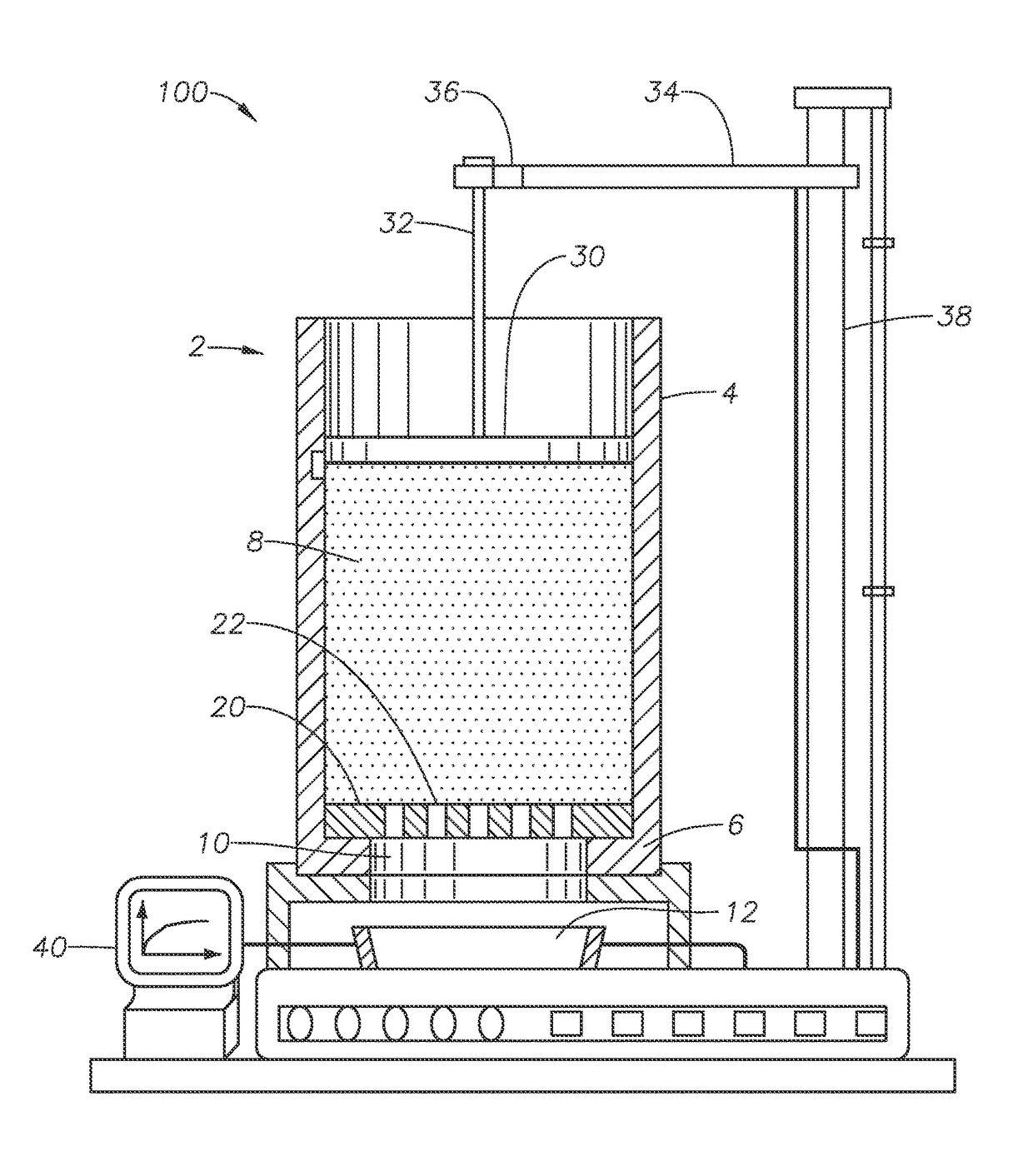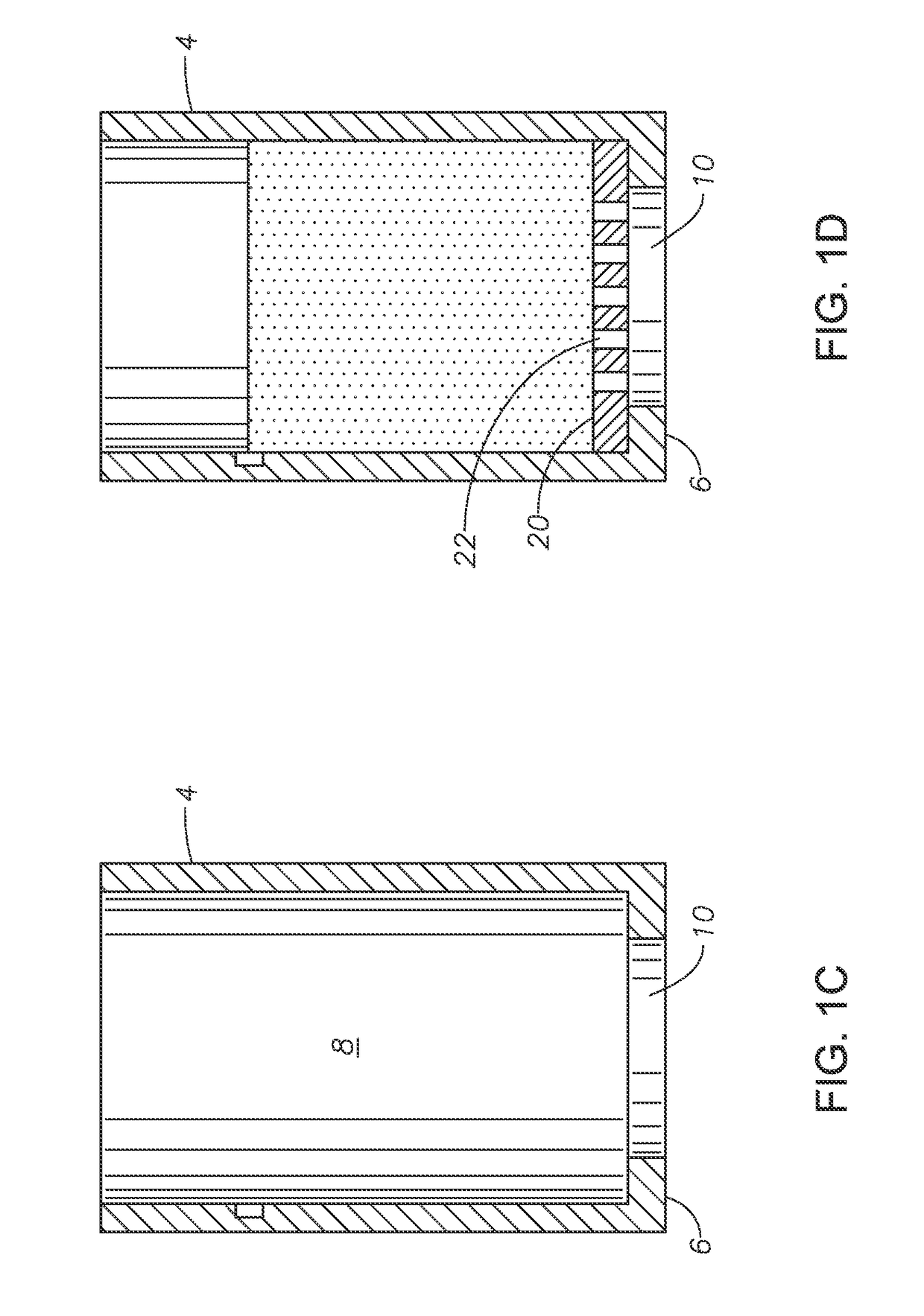Method and apparatus for testing gel-based lost circulation materials
a gel-based, lost circulation technology, applied in the direction of instruments, direct flow property measurement, borehole/well accessories, etc., can solve the problems of fluid loss beyond acceptable norms, frequent challenges encountered, and lost circulation
- Summary
- Abstract
- Description
- Claims
- Application Information
AI Technical Summary
Problems solved by technology
Method used
Image
Examples
example 1
[0068]In example 1, six different gel-based LCMs (1-6) were produced. Although described with reference to gel-based LCM 1, the procedure for Example 1 was repeated for each of the six different gel-based LCMs. Gel-based LCM 1 was produced by mixing the components for gel-based LCM 1 with a high speed mixture for 10-15 minutes each. Gel-based LCM 1 was set aside for a cure time of 1-2 hours at room temperature and pressure. Without being bound to a specific theory, it is suspected that the cure time provides for inter-particle bonding, networking, and gelling and so the cure time enhances the gel properties of gel-based LCM 1.
[0069]After the cure time, test sample 1 from gel-based LCM 1 was collected. The size of test sample 1 was such that gel-based LCM 1 test sample 1 would fill the LCM test cell to the fill level of the cell space volume. The flat foot disc piston was placed on top of the gel-based LCM 1 test sample 1 so that the flat foot disc piston was flush with the cylinder ...
PUM
| Property | Measurement | Unit |
|---|---|---|
| hole diameter | aaaaa | aaaaa |
| central perforation diameter | aaaaa | aaaaa |
| perforation diameter | aaaaa | aaaaa |
Abstract
Description
Claims
Application Information
 Login to View More
Login to View More - R&D
- Intellectual Property
- Life Sciences
- Materials
- Tech Scout
- Unparalleled Data Quality
- Higher Quality Content
- 60% Fewer Hallucinations
Browse by: Latest US Patents, China's latest patents, Technical Efficacy Thesaurus, Application Domain, Technology Topic, Popular Technical Reports.
© 2025 PatSnap. All rights reserved.Legal|Privacy policy|Modern Slavery Act Transparency Statement|Sitemap|About US| Contact US: help@patsnap.com



